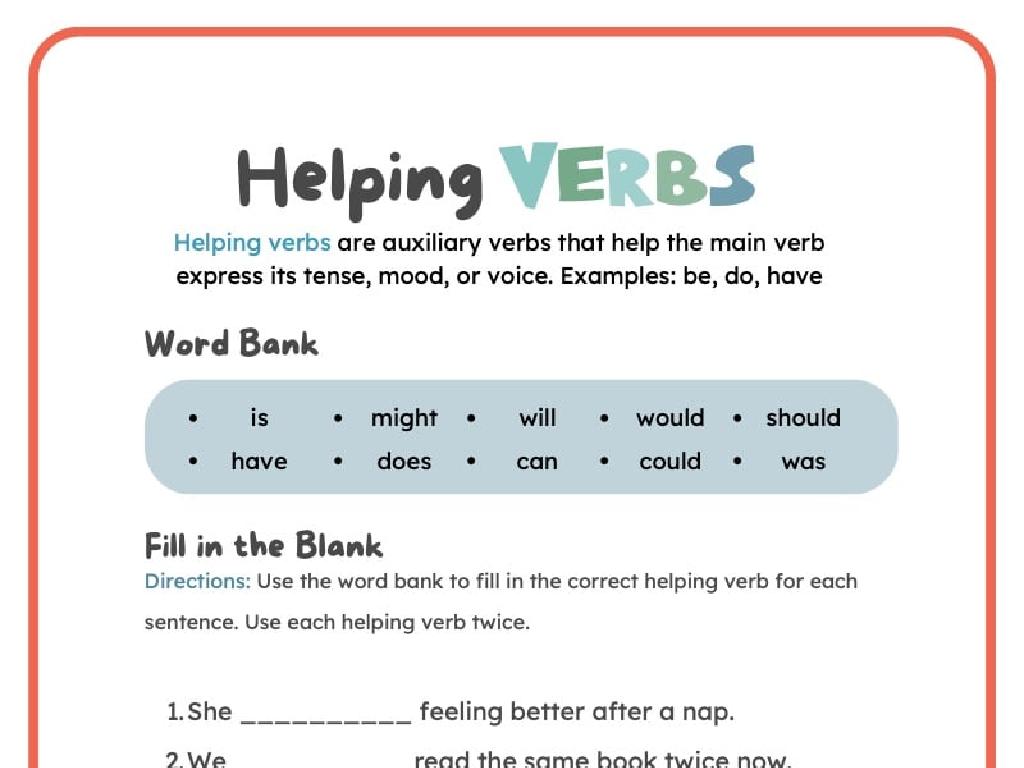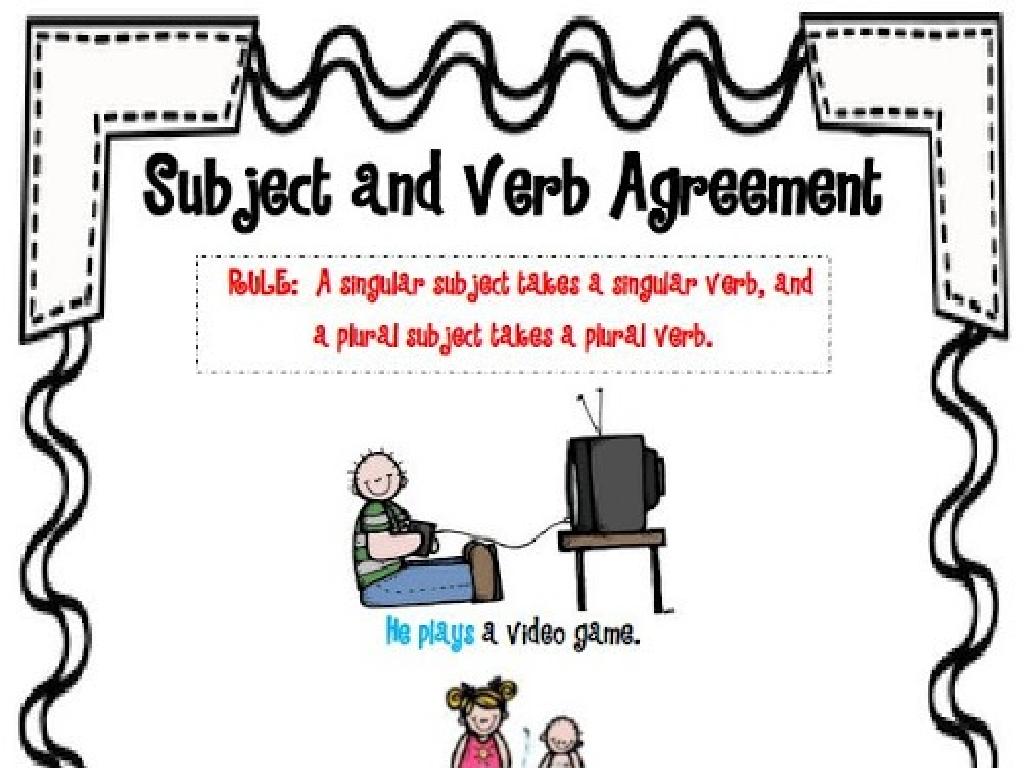Write Inequalities From Number Lines
Subject: Math
Grade: Sixth grade
Topic: One-Variable Inequalities
Please LOG IN to download the presentation. Access is available to registered users only.
View More Content
Introduction to Inequalities
– Understanding inequalities
– An inequality shows how two values compare, not always equal.
– Inequalities vs. equations
– Equations show equality, while inequalities show a range of possible solutions.
– Real-life inequality examples
– Budgeting allowance, or minimum height for a ride.
– Practice with number lines
– Use a number line to graph solutions to inequalities.
|
Begin by explaining that inequalities are statements about the relative size of two values. They can indicate that one number is larger, smaller, or not equal to another. Contrast this with equations, which show that two values are equal. Provide real-world examples where inequalities are used, such as having a limited budget to spend or height restrictions for amusement park rides. This helps students understand the concept’s practicality. Finally, introduce the use of number lines as a tool to visualize and solve inequalities, which will be a foundation for their practice in this unit. Encourage students to think of other daily situations where they encounter inequalities.
Understanding Number Lines
– Define a number line
– A straight line with numbers placed at equal intervals
– Learn to read a number line
– Numbers increase as you move right, decrease to the left
– Identify points on a number line
– Points correspond to numbers; used to represent values
– Practice with examples
– Use real-life scenarios like temperatures or ages for practice
|
This slide introduces the concept of a number line, which is a fundamental tool in mathematics for representing and comparing numbers. It’s important to ensure students understand that a number line is a visual representation where each point corresponds to a number. Emphasize that the direction in which numbers increase or decrease is crucial for interpreting inequalities later on. Provide clear examples of identifying specific points on a number line, such as marking ages or temperatures. Encourage students to practice by placing various numbers on a number line themselves. This foundational knowledge will be critical when they begin to write inequalities from number lines.
Symbols of Inequality: Decoding Number Lines
– Understanding ‘>’ and ” means more than, ‘<' means less than
– Interpreting 'e' and 'd'
– 'e' includes the number, 'd' means up to and including
– Using '`' in inequalities
– '`' shows values are not equal
– Practice with number lines
|
This slide introduces students to the basic symbols used in inequalities and how to interpret these on number lines. Begin by explaining the greater than (>) and less than (<) symbols, ensuring students understand that these denote whether one number is larger or smaller than another. Then, move on to the greater than or equal to (e) and less than or equal to (d) symbols, emphasizing that the line under the symbol means 'or equal to.' Introduce the not equal to (`) symbol as a way to represent values that are not the same. Use number line diagrams to provide visual examples of each symbol. Encourage students to practice by drawing their own number lines and placing the correct inequality symbols between numbers. This will prepare them for identifying and writing inequalities from number lines.
Writing Inequalities from Number Lines
– Understand inequality symbols
– Symbols: , d, e represent relationships
– Write inequalities from graphs
– Look at the direction of the arrow on the number line
– Convert graphs to inequalities
– Graphs show values that are less/greater than a number
– Practice with real examples
– Use examples like test scores or age limits
|
This slide introduces students to the concept of expressing inequalities derived from number line graphs. Begin by explaining the meaning of each inequality symbol and how they represent the relationship between numbers. Show how these symbols are used to interpret the direction of arrows on number line graphs, which indicate whether values are less than or greater than a certain point. Provide clear examples by converting graphical information into written inequalities, such as interpreting a number line graph that represents a real-world scenario like minimum test scores needed to pass or age requirements for a game. Encourage students to practice by creating their own number lines and writing corresponding inequalities.
Practicing Inequalities with Number Lines
– Write inequality from Example 1
– Example 1 shows a number line; determine the inequality it represents.
– Graph inequality for Example 2
– Use a number line to graph the inequality given in Example 2.
– Discuss both examples in class
– Share solutions and methods used for both examples.
– Understand inequality symbols
– Learn when to use , d, e in inequalities.
|
This slide is designed for a class activity where students will practice writing and graphing inequalities using number lines. For Example 1, provide a number line with a shaded region or a point, and ask students to write the corresponding inequality. For Example 2, give students an inequality and have them represent it on a number line. Facilitate a class discussion where students explain their solutions and reasoning. This will help them learn from each other and clarify any misconceptions. Ensure that students understand the inequality symbols and when to use them, especially the difference between ‘less than’ and ‘less than or equal to’ as well as ‘greater than’ and ‘greater than or equal to’. Possible activities include peer review of written inequalities, group work to graph inequalities, and individual presentations of solutions.
Number Line Inequality Challenge
– Pair up for the activity
– Write inequalities from number lines
– Use the number line to express inequalities, e.g., x > 3 or x d 7
– Share answers with the class
– Discuss different solutions
– Compare how each pair approached the problem
|
This class activity is designed to encourage collaborative learning and reinforce the concept of writing inequalities from number lines. Students will pair up, which promotes teamwork, and each pair will be given a number line with different ranges marked. They will then write down the inequality that represents the marked range. Afterward, pairs will share their inequalities with the class, providing an opportunity for public speaking and peer learning. The group discussion will allow students to see multiple ways to approach the same problem, fostering a deeper understanding of inequalities and how they can be represented on a number line. Possible activities: 1) Have pairs create their own number lines for others to write inequalities. 2) Use real-world scenarios to form inequalities. 3) Introduce inequalities with open and closed dots on number lines. 4) Challenge students with number lines that include negative numbers. 5) Encourage students to explain their reasoning during the group discussion.
Conclusion: Inequalities & Number Lines
– Recap: Inequalities on number lines
– Why inequalities matter
– Understanding inequalities is crucial for mathematical reasoning and problem-solving.
– Real-life applications
– Examples: budgeting money, comparing test scores, or measuring ingredients.
– Next: Solving inequalities
– We’ll learn methods to find solutions to inequalities.
|
As we wrap up today’s lesson, we’ve revisited how to represent inequalities on number lines, emphasizing the importance of this skill in both academic and everyday contexts. Understanding inequalities allows students to make sense of various scenarios, such as financial decisions or scientific measurements. Looking ahead, we will build on this foundation by exploring how to solve one-variable inequalities, equipping students with the tools to find solutions to these mathematical expressions. Encourage students to review today’s material and come prepared with questions for the next lesson.
Homework: Mastering Inequalities
– Complete inequality worksheet
– Use number lines to write inequalities
– Study for the upcoming quiz
– Review today’s lesson and practice problems
– Compile questions for next lesson
– Note down any difficulties to discuss
– Practice writing inequalities
|
This homework assignment is designed to reinforce today’s lesson on writing inequalities from number lines. Students are expected to complete the provided worksheet, which will serve as practice for the quiz in the next class. Encourage students to review their notes and attempt additional practice problems to prepare for the quiz. They should also write down any questions or areas of confusion they encounter while completing their homework to bring to the next lesson for clarification. This will ensure they have a solid understanding of one-variable inequalities and are well-prepared for the quiz.





